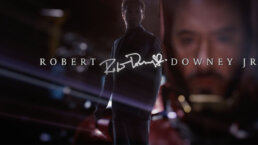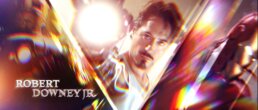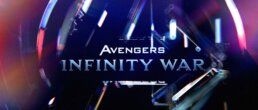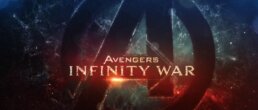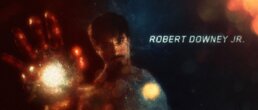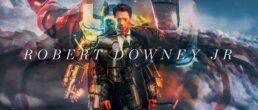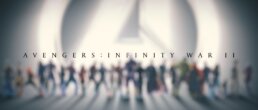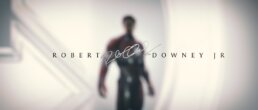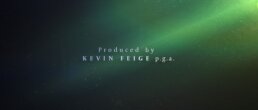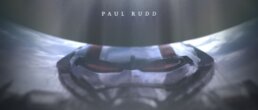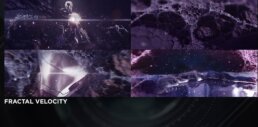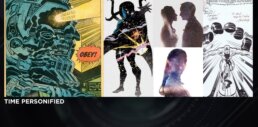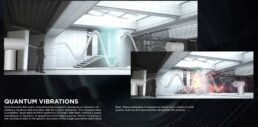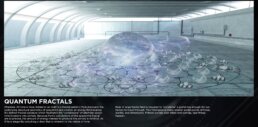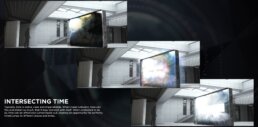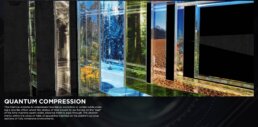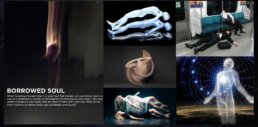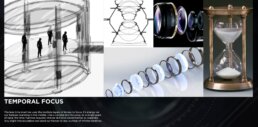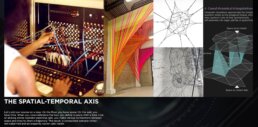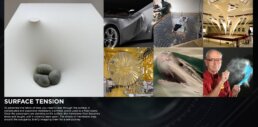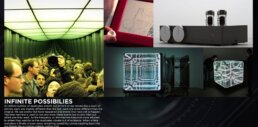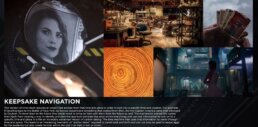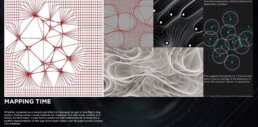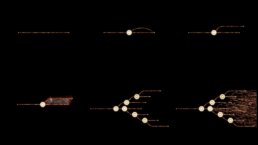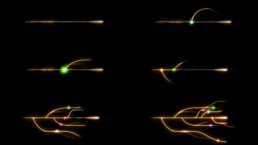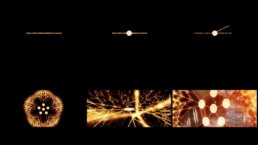01
INTRODUCTION
When our team was given the opportunity to create the Main On End title sequence for Marvel Studios' Avengers: Endgame, it wasn't lost on us how huge this could be. Before anyone saw a second of footage for Avengers: Endgame, everyone knew it would be one of the biggest movies in the world.
Visual Effects Director at Perception, Doug Appleton, explained the mood in the studio. “Honestly, once the excitement died down, it was a bit intimidating. How do you end the movie that ends the story that started 22 movies ago? So, when we talked to Marvel Studios, and Kevin Feige had the idea to give this sequence a 'curtain call’ kind of feel, everything just clicked into place.”
We knew we had to create a sequence that lived up to the hype. We believed that the best way forward was not to create something bigger and splashier but to go smaller and more intimate. We wanted something that felt personal, that felt sentimental, that reminded you of the last ten years of Marvel cinematic history, and that was truly a love letter to the fans.
John LePore, Perception's Chief Creative Director, stated, "At the end of these films, fans aren't starving for 'motion design'—they just want more time with these characters. We took inspiration from the fandom in general, especially fan-made supercuts, and decided to make a sequence that celebrated the journey to get to this point."
Avengers Endgame Main On End Title Sequence
“These credits are an incredible celebration of all of the amazing people behind movies of this scale. It’s like you’re in a Broadway theater and the cast is coming out to take their bows. In our theater on opening night, it got an applause. When it got to Robert [Downey Jr.], it got a standing ovation, as if they were really in the room.”
-Joe & Anthony Russo, Directors of Avengers: Endgame
02
INITIAL CONCEPTS
We proposed several directions, all with the goal of pulling aside the curtain to reveal the actors beneath the characters. Marvel Studios didn't simply want to celebrate the movies, they wanted to celebrate the actors that made these movies so beloved, especially the original six Avengers.
The winning idea was a combination of two different executions: first, each actor front and center while footage of their performance is projected on top of them, and second, an idea from Marvel Studios' President Kevin Feige, drawing the actors' signatures over footage of their characters for a more personal and intimate connection.
CREATIVE DIRECTIONS
Early on in production it became clear to us that the title sequence had three distinct sections, the Crew, the Cast, and the “Hero 6”. It was important to everyone involved that each section should feel unique but part of a greater whole. We decided to use film footage in a progressive way, beginning with abstract light rays and becoming more distinct as the sequence goes on.
REFINED FRAMES
As the sequence opens, the 1945 hit “It’s Been a Long, Long Time” provides a bridge from Steve and Peggy’s long-awaited dance in the final scene to the Main On End sequence where there is a distinctive lack of light, allowing the audience a moment to process what they've just experienced. Then, slowly, light begins to filter in. While it may appear that these are merely abstract light rays, they are in fact built from projected footage. Each piece of footage was specifically selected not just for the way it interacted with the light but also for its iconic power.
03
MAIN ON END BREAKDOWN
BREAKDOWN CREW
The first big shift in perspective occurs when the sequence progresses from crew to cast. In this new section, the footage becomes more distinct, showing tight intimate croppings of footage—a hand, a mask, a symbol—that help make these characters feel larger than life.
Crew Credits Breakdown
BREAKDOWN CAST
When we finally come to the original Avengers, the camera pulls back further, incorporating an image of each actor in the foreground with footage of their characters in the background. It needed to feel big. It needed to feel reverent. And above all, it needed to feel like a curtain call celebrating their time in these iconic roles. The signatures create a connection between the audience and the actor, reminding us that these larger than life characters have been played by larger than life people.
The title sequence for Avengers: Endgame feels big in its simplicity but that's not the only unique thing about it. The sheer amount of star power attached to the film means that the title sequence is almost twice as long as our average title sequence and has over 60 unique title cards.
In addition to its length, the sequence also has a unique order. Traditionally, the biggest stars of a film get the top spots in the cast billing but the team at Marvel Studios wanted the titles to build up to the original Avengers. This meant that the credits actually play in a reverse order from more traditional credits, ending on a shot of Robert Downey Jr. giving it the feel of a Broadway show where the biggest ovation comes on the final bow.
Cast Credits Breakdown
04
MAIN TITLES
In addition to the end title sequence, we also created the Main Title. It was important for us to stay true to the scale, placement, and motion of the “Avengers” text so that it felt appropriate next to the previous films. Originally designed as a companion piece to the title, we created for Marvel Studios’ Avengers: Infinity War (which itself was an extension of the previous films), the main title for Avengers: Endgame evolved into its own unique design.
Main Title Design
05
RESEARCHING TIME TRAVEL THEORY
Another hat our team often wears on Marvel Studios’ films is that of conceptual development consultants. On Avengers: Endgame, we were brought in about 3 years before the release of the film to work with the production team and writers on the concept of time travel in the story they were telling.
While the creative team at Marvel Studios consulted with quantum physicists about the practicality of time travel, we were focused on the mechanics of how it might work, what it might look like, and how you would explain it. We also assisted the filmmakers with exploring ideas surrounding scientific considerations, technology-based concepts, and potential narrative influences. What started as some brainstorming exercises lead to some fascinating discussions with the Directors, the Writers and the Marvel Studios Executive team.
TIME TRAVEL LESSONS
In this scene, the Hulk, acting as the audience surrogate, receives an explanation of time travel for the very first time. For the Ancient One, and for Marvel Studios, the information needed to be easily and immediately understandable or else vital information could be overlooked. In creating these simple diagrams we had to think about the best way to convey these complicated ideas as efficiently as possible.
CONCLUSION
Avengers: Endgame is truly a once-in-a-lifetime cinematic experience that we were privileged to have contributed to.
Jeremy Lasky, Perception Co-Founder, explains, "We were so honored to have collaborated once again with Marvel Studios and the Russo Brothers. Looking back, from a kid in a Brooklyn comic shop, to 35 years later leading the team that designed the final curtain call for the biggest film in movie history is more meaningful than I can put into words. Watching audiences cheering and standing up and clapping through those final 6 title cards—it's beautiful and humbling."
